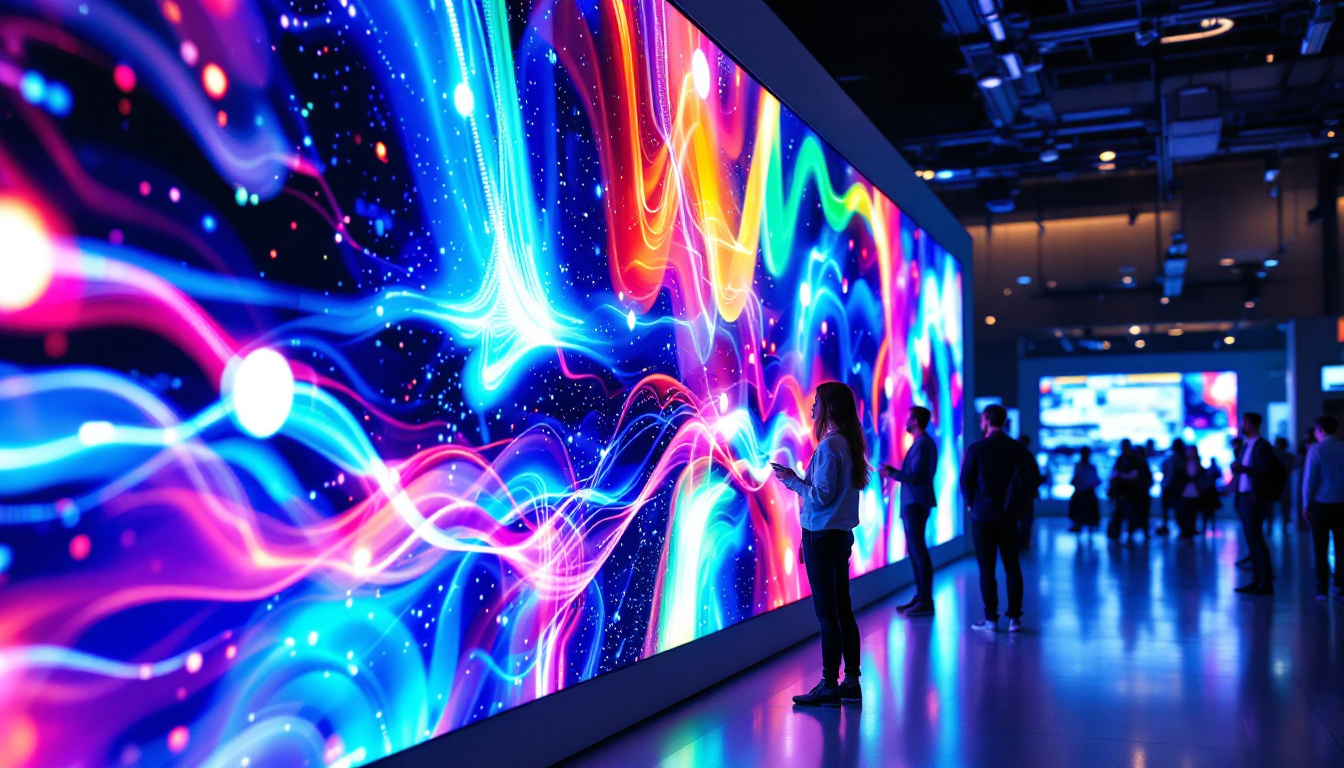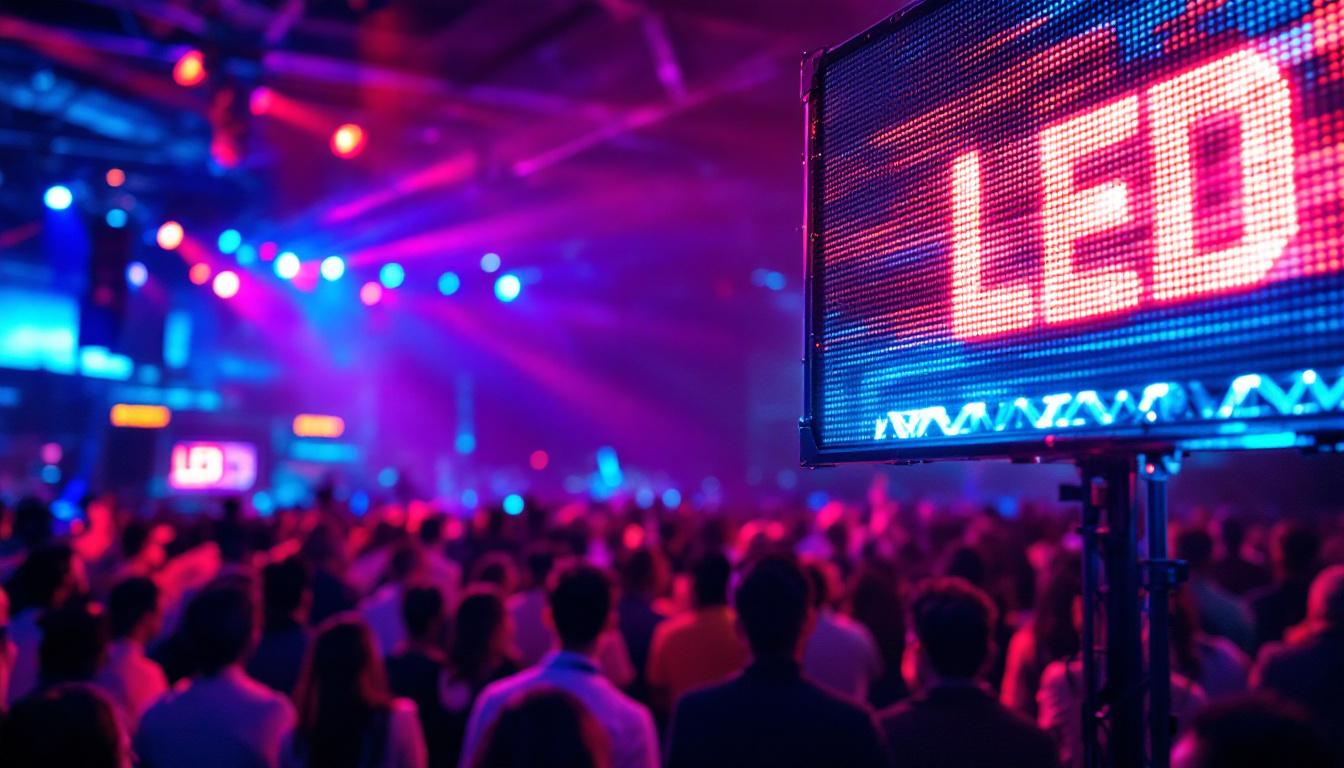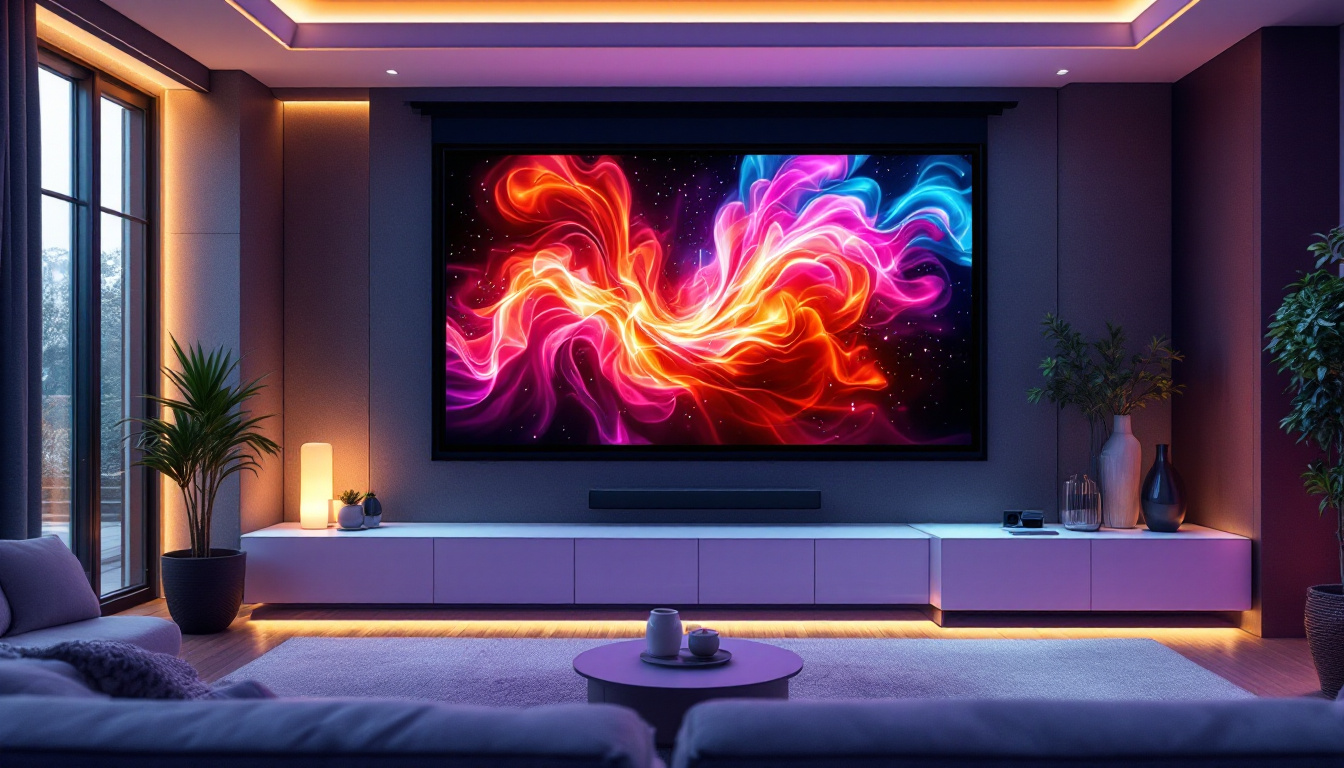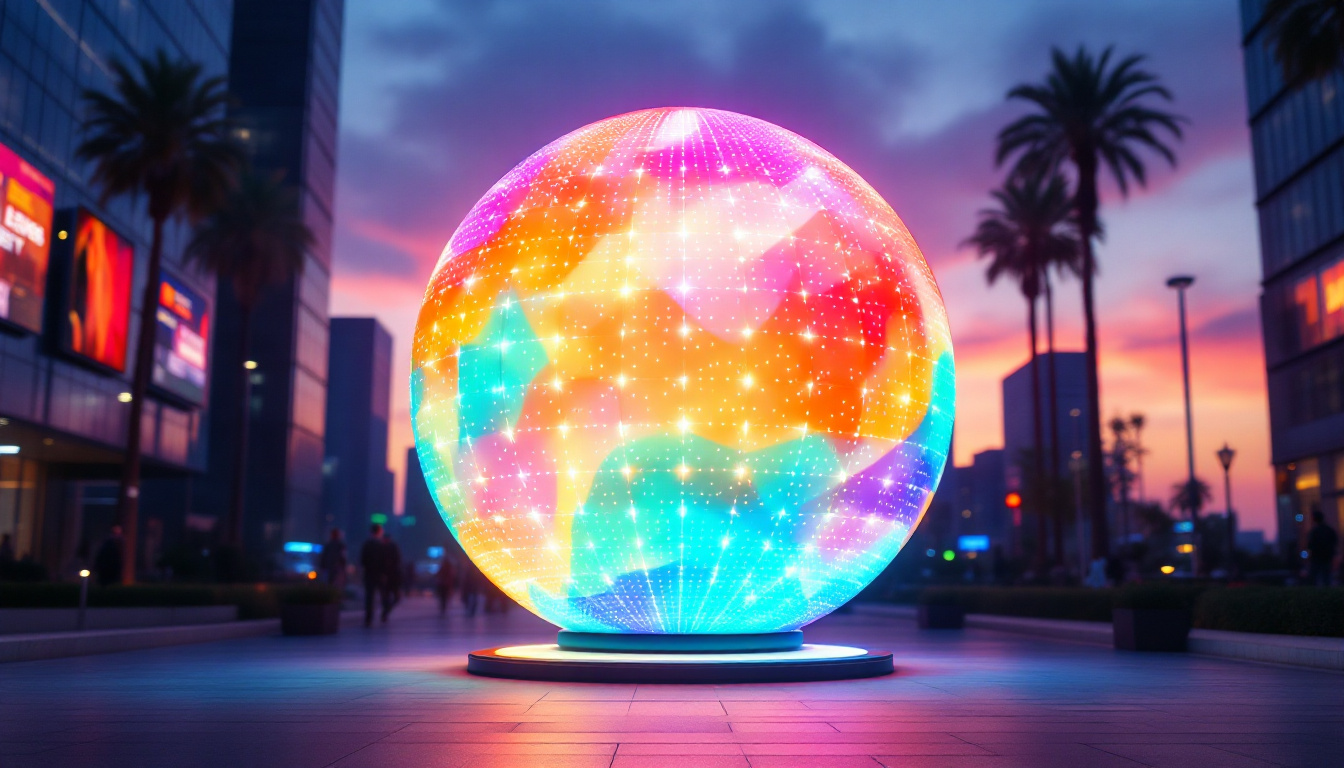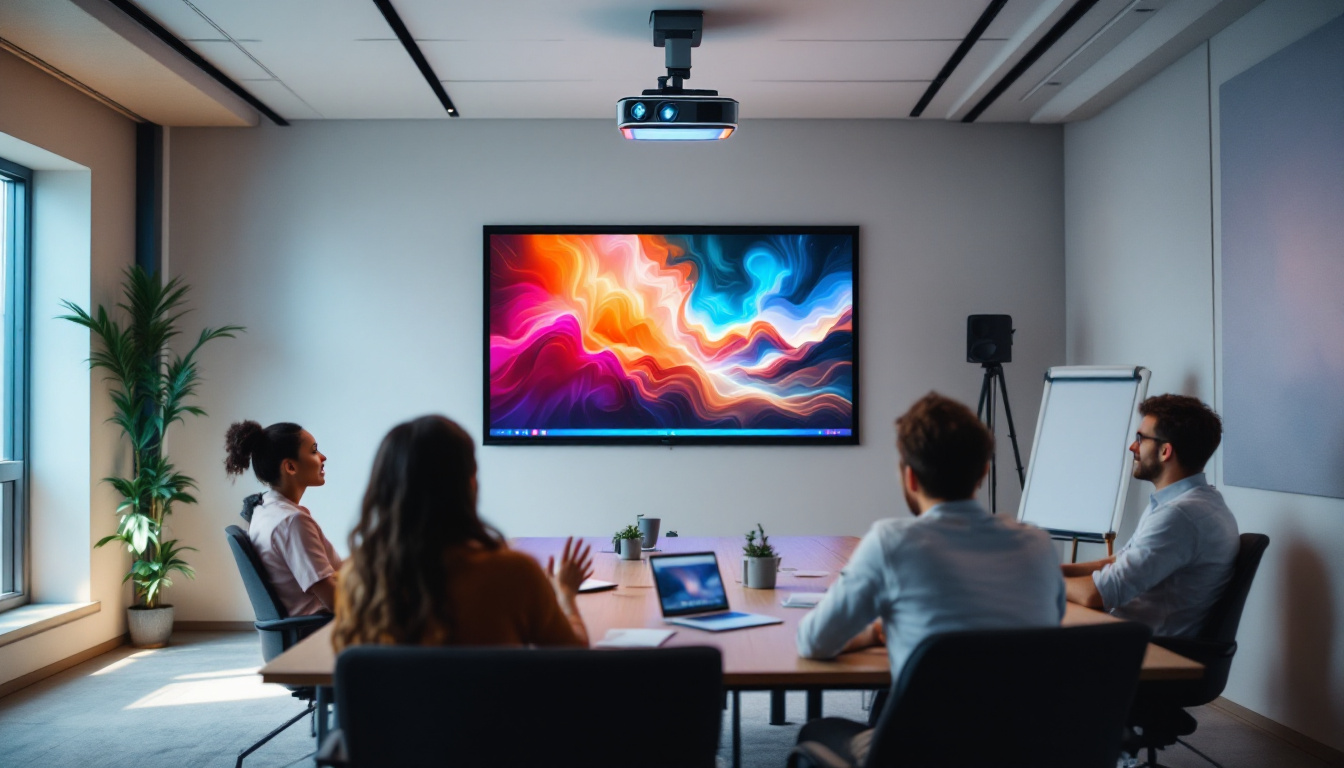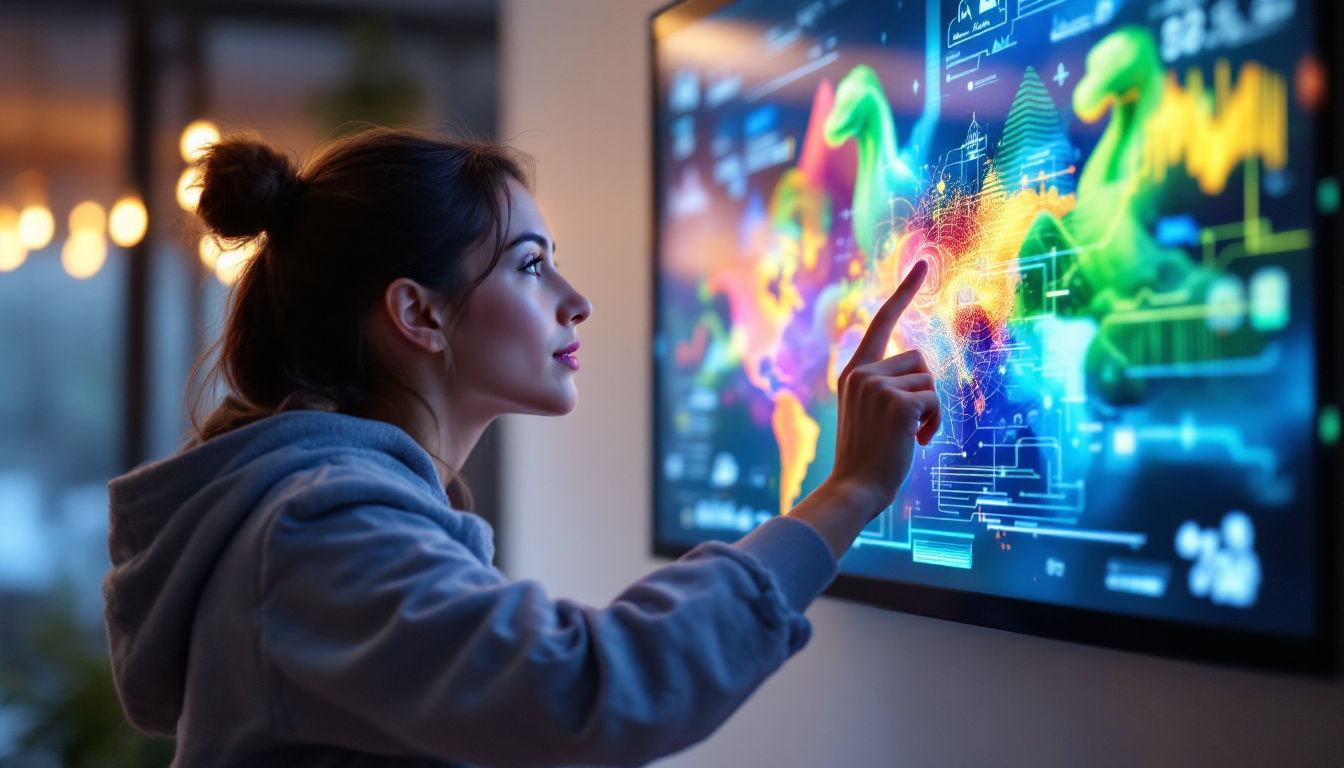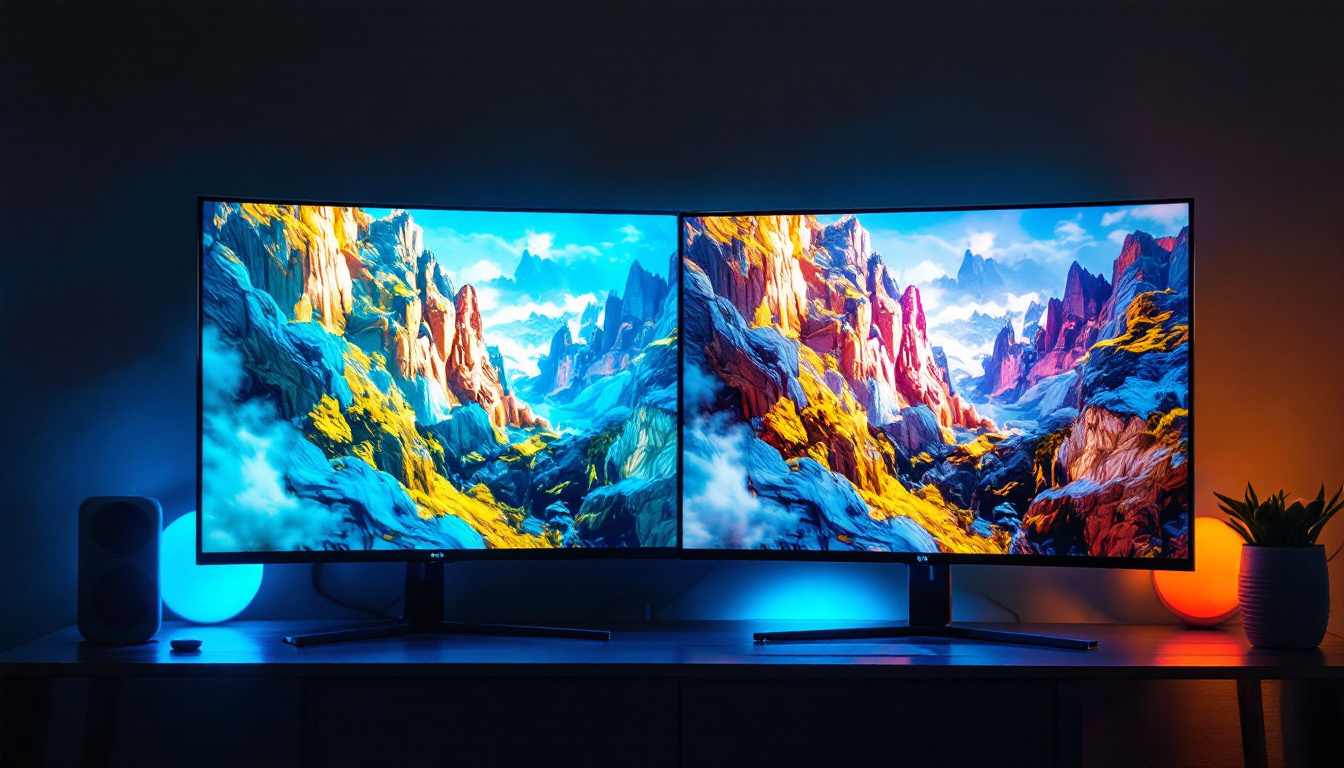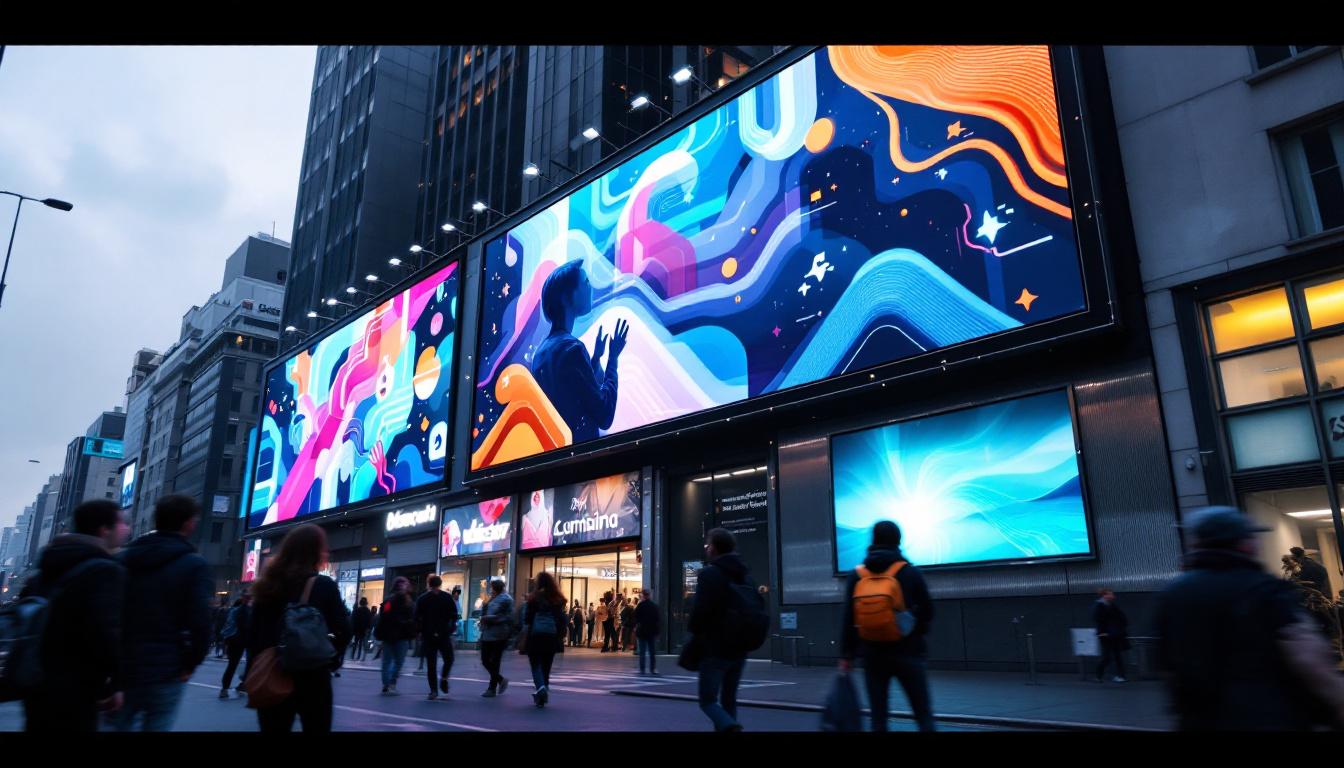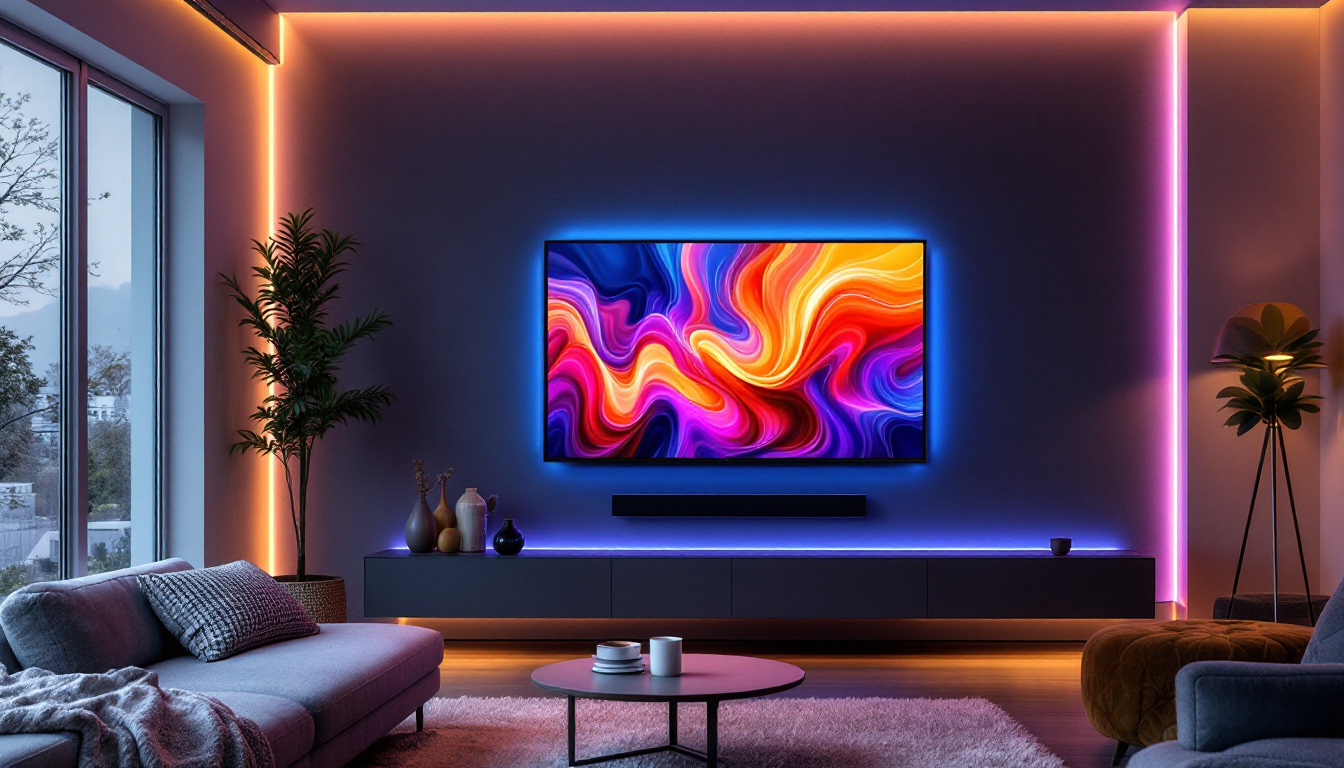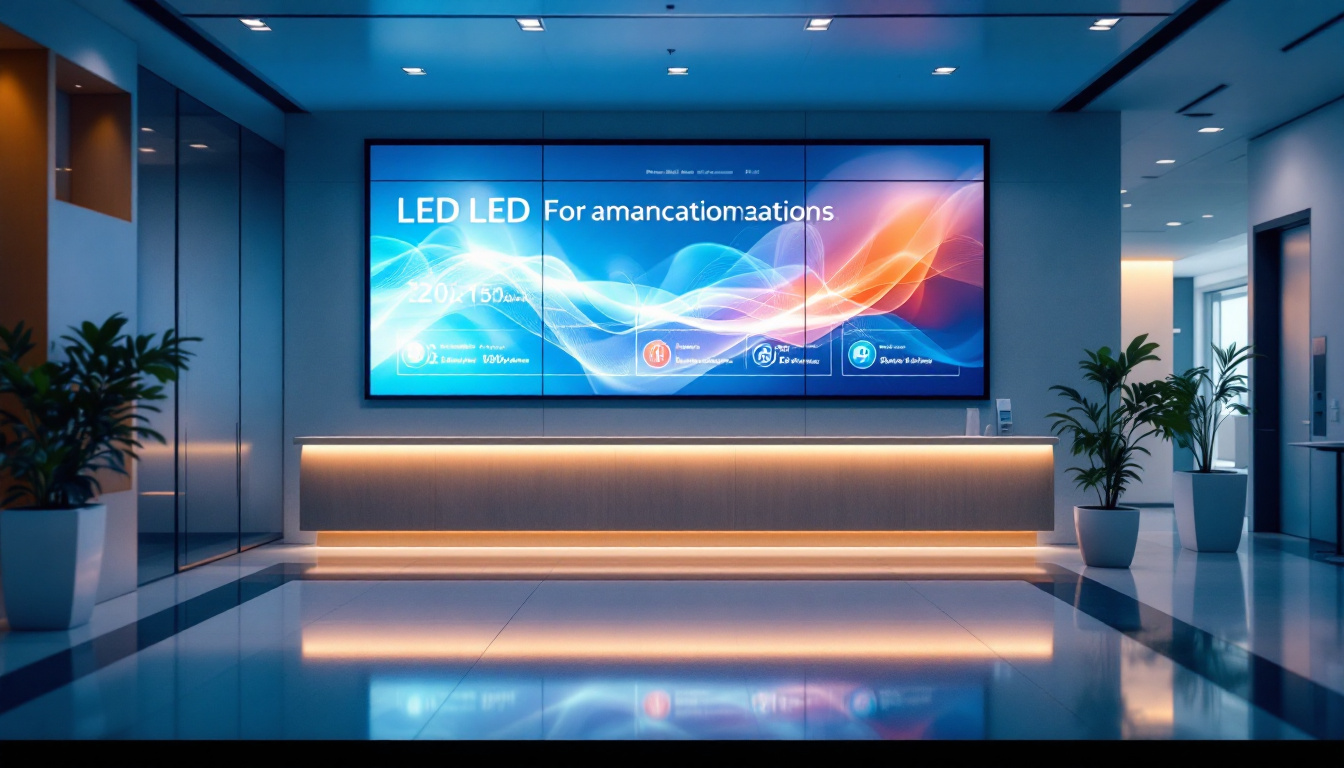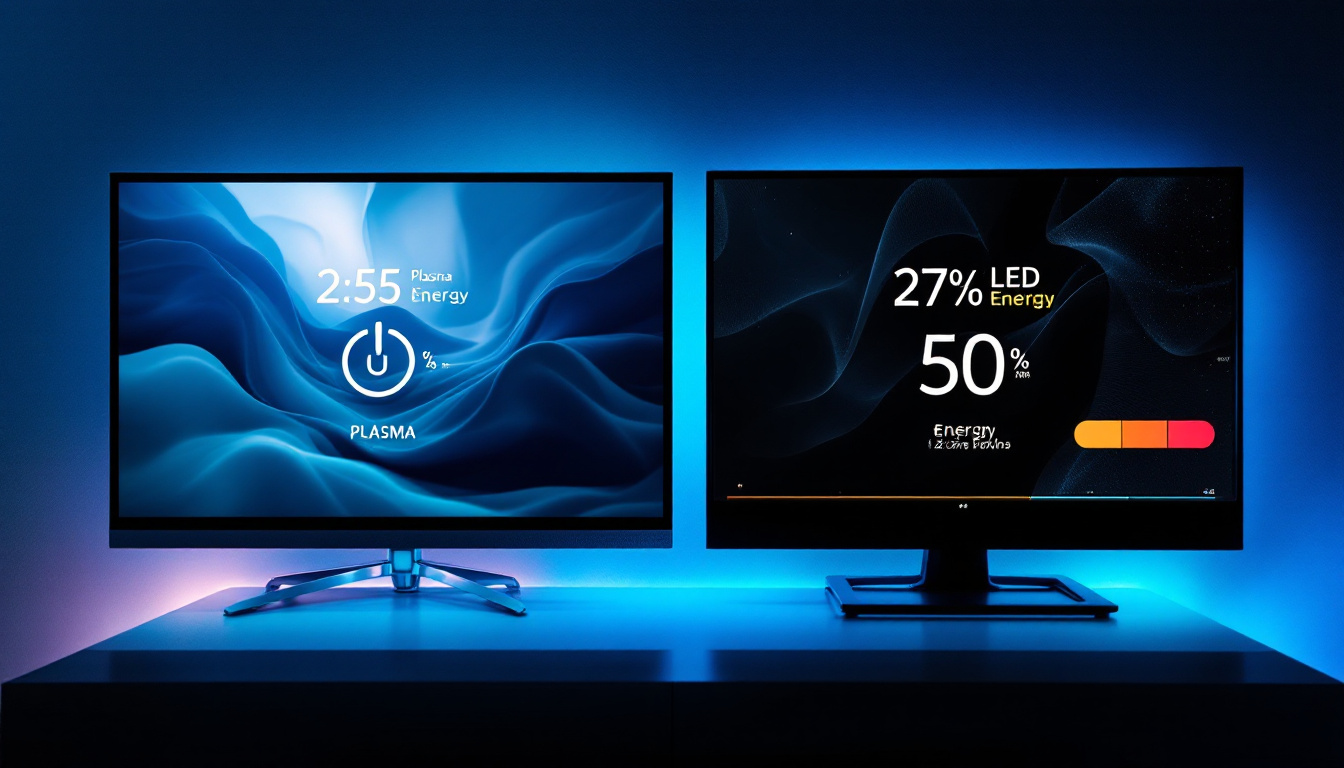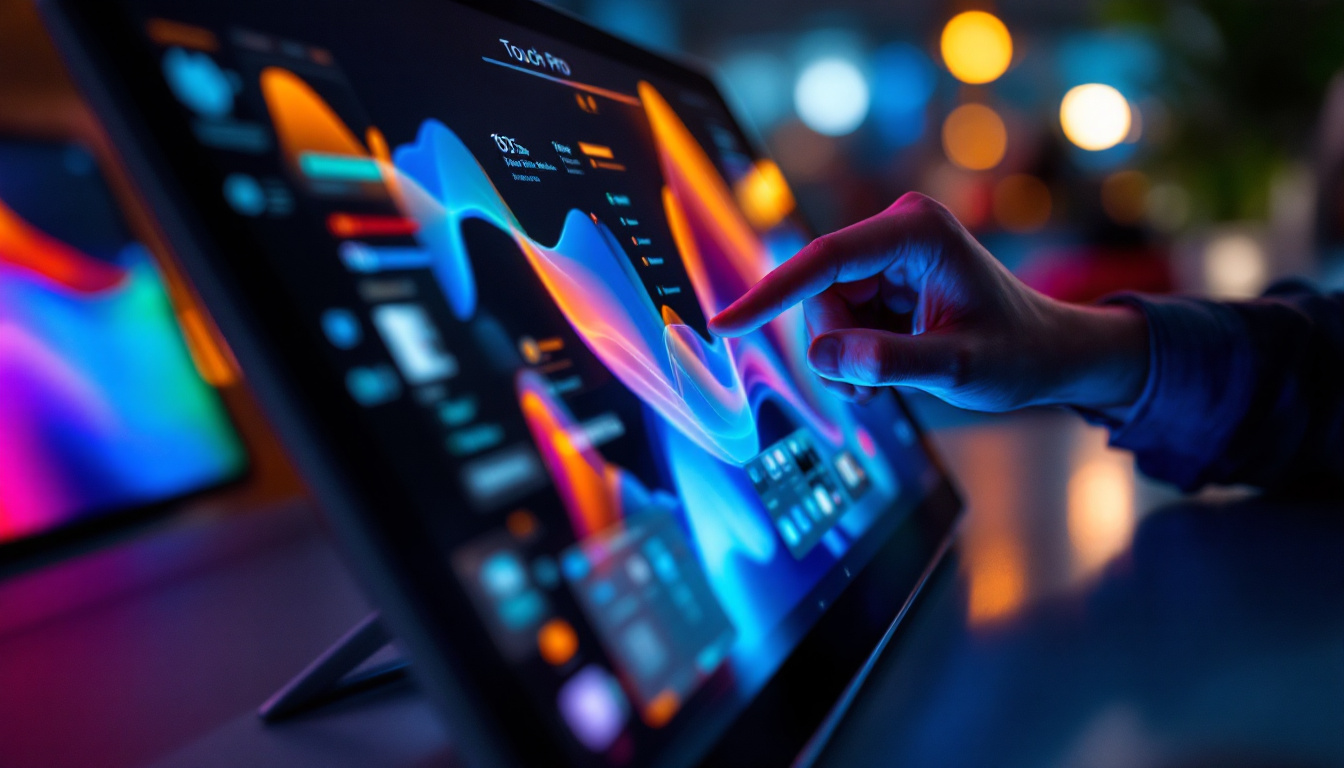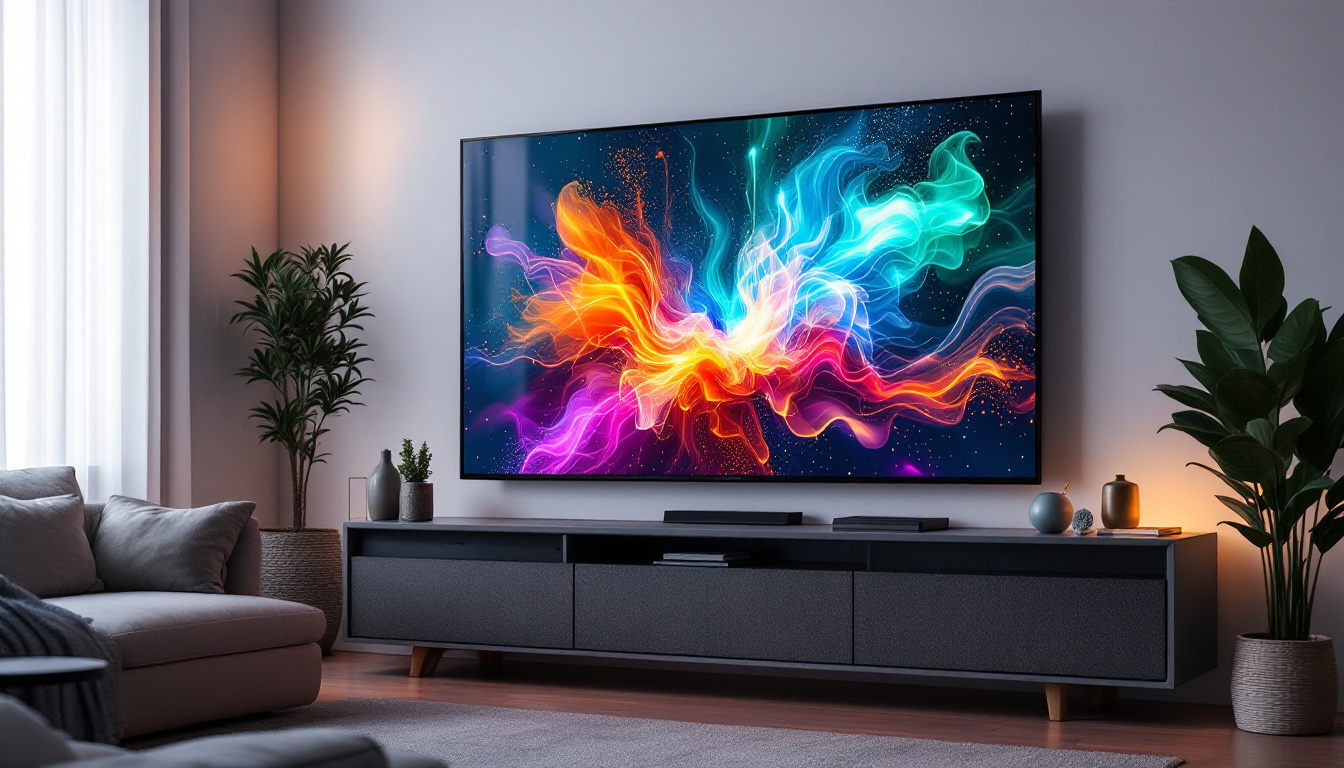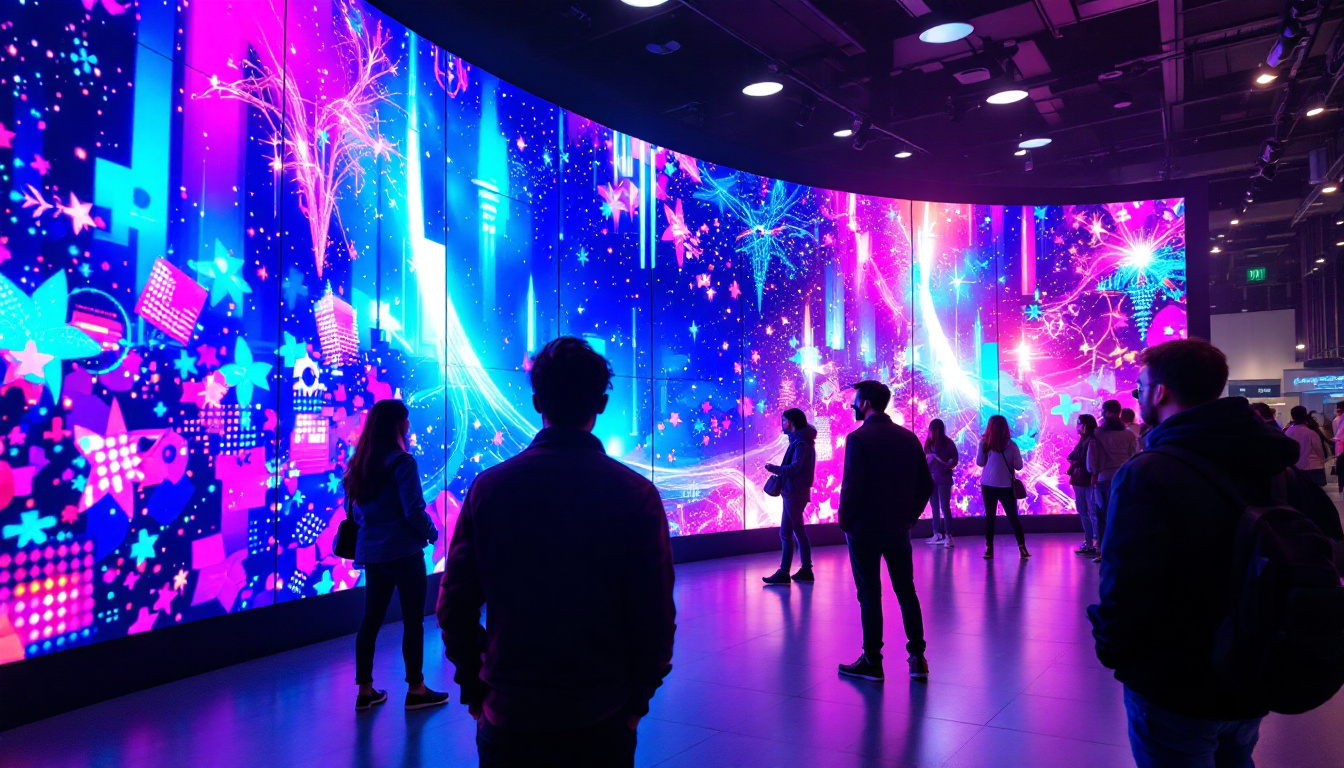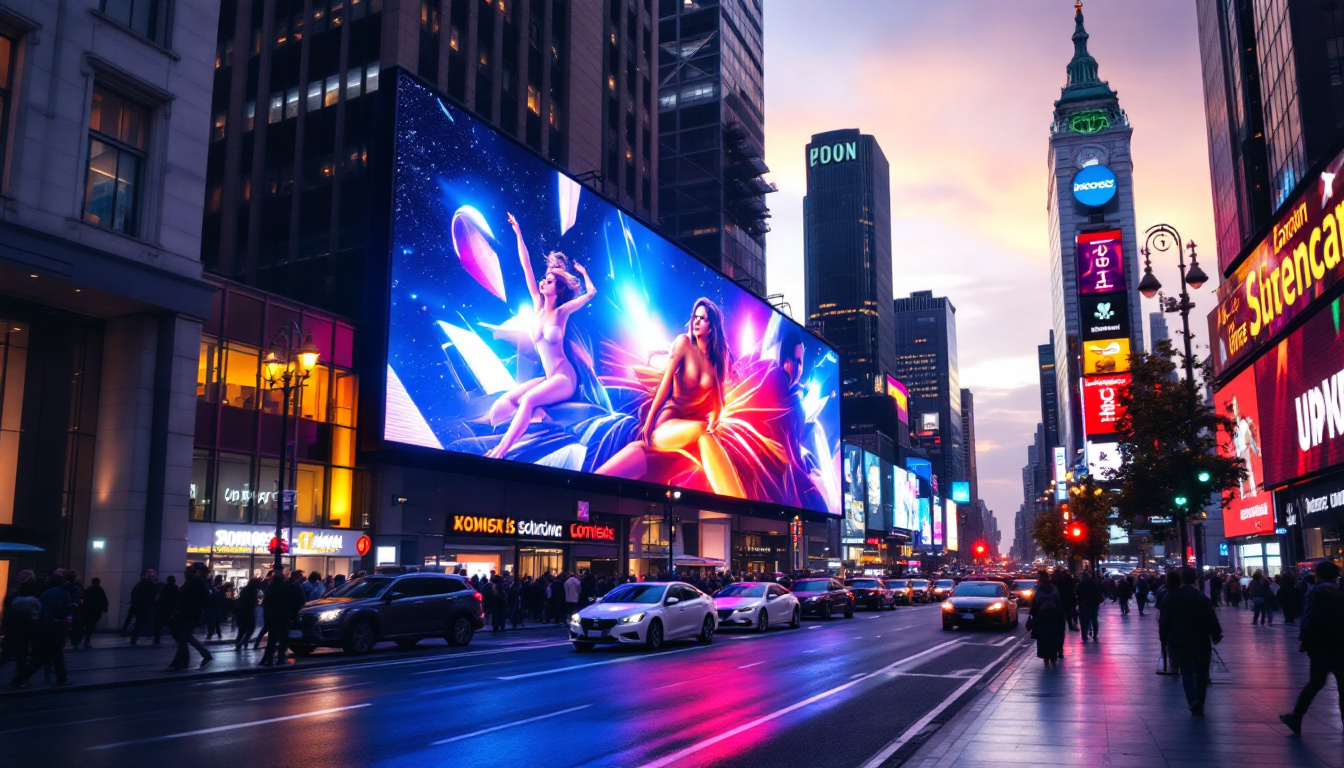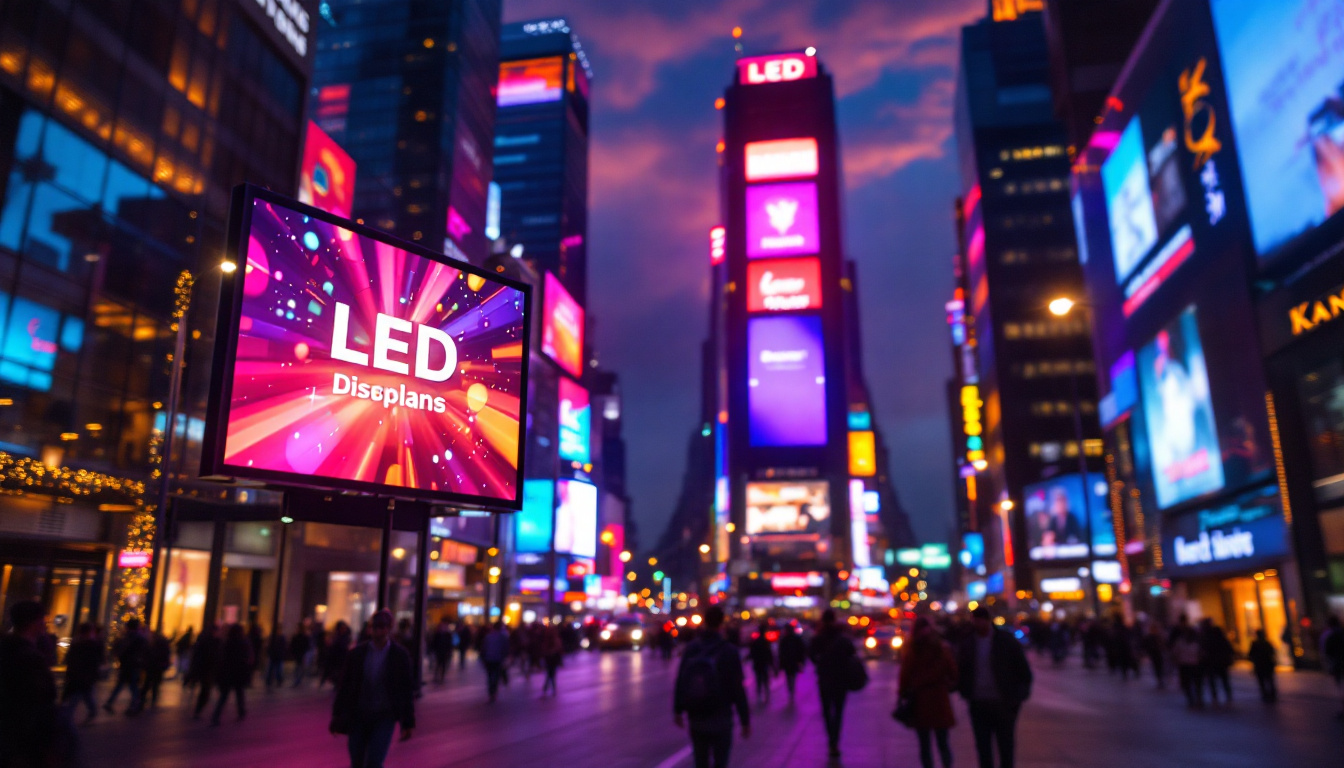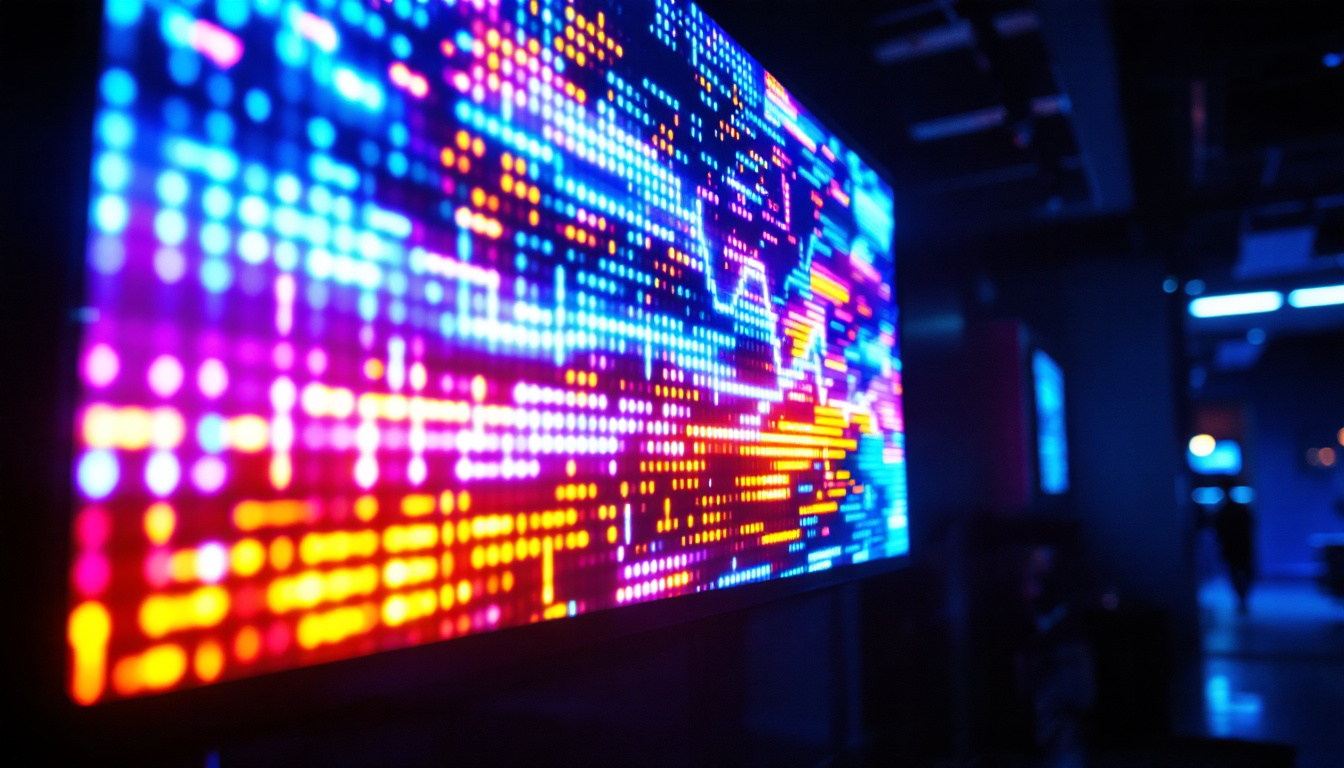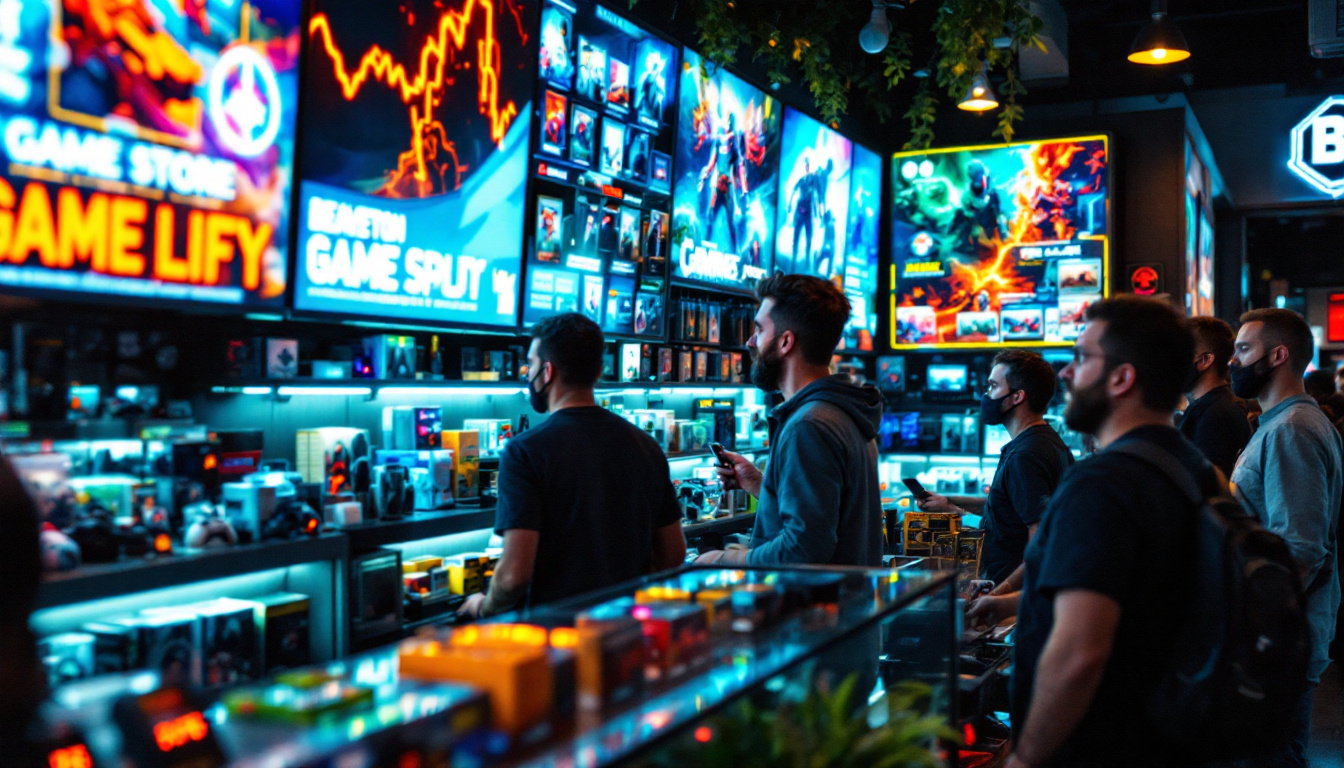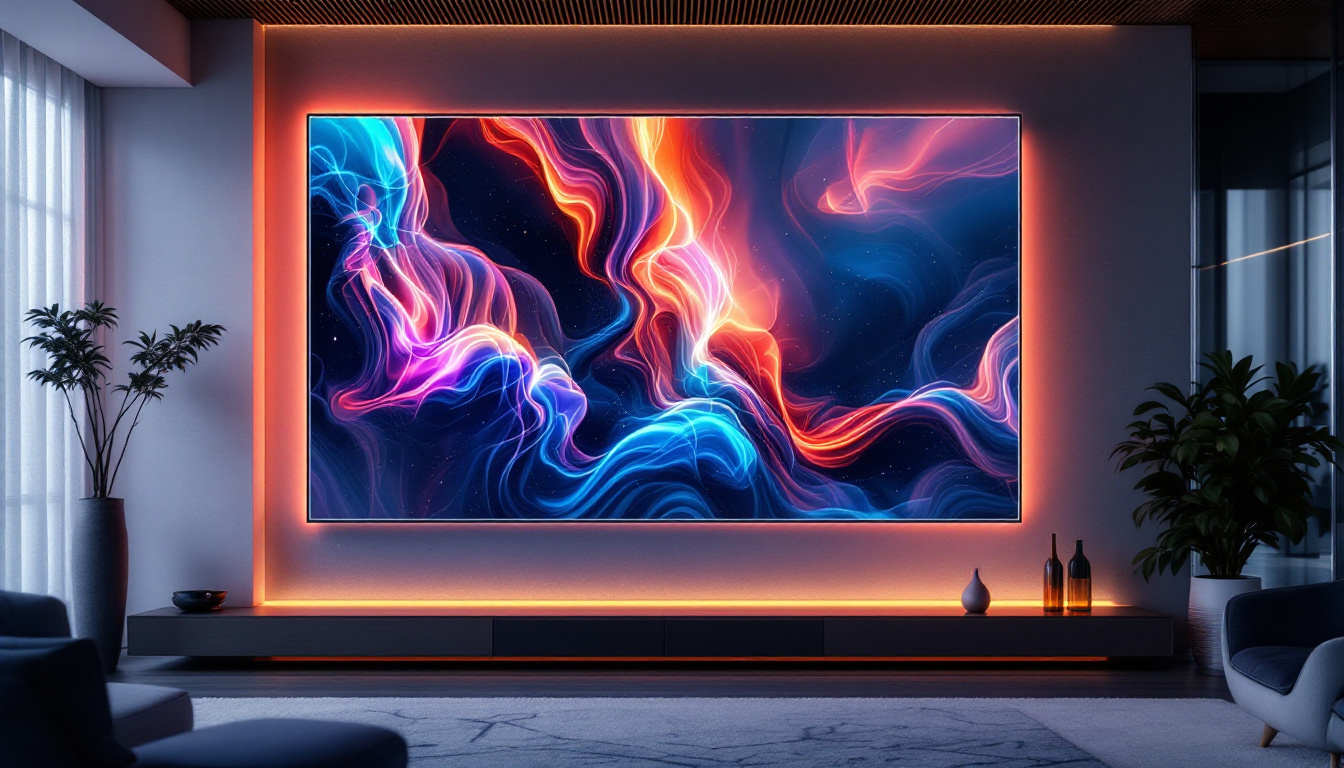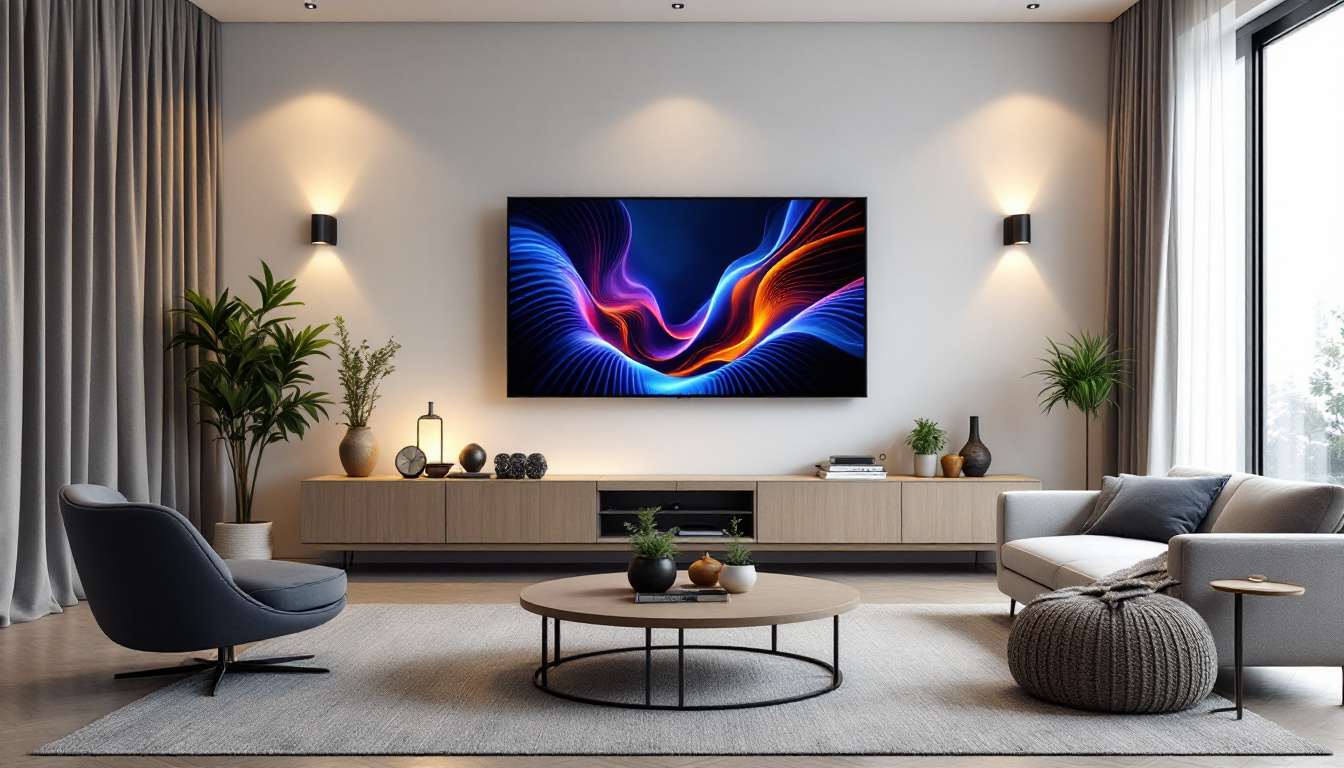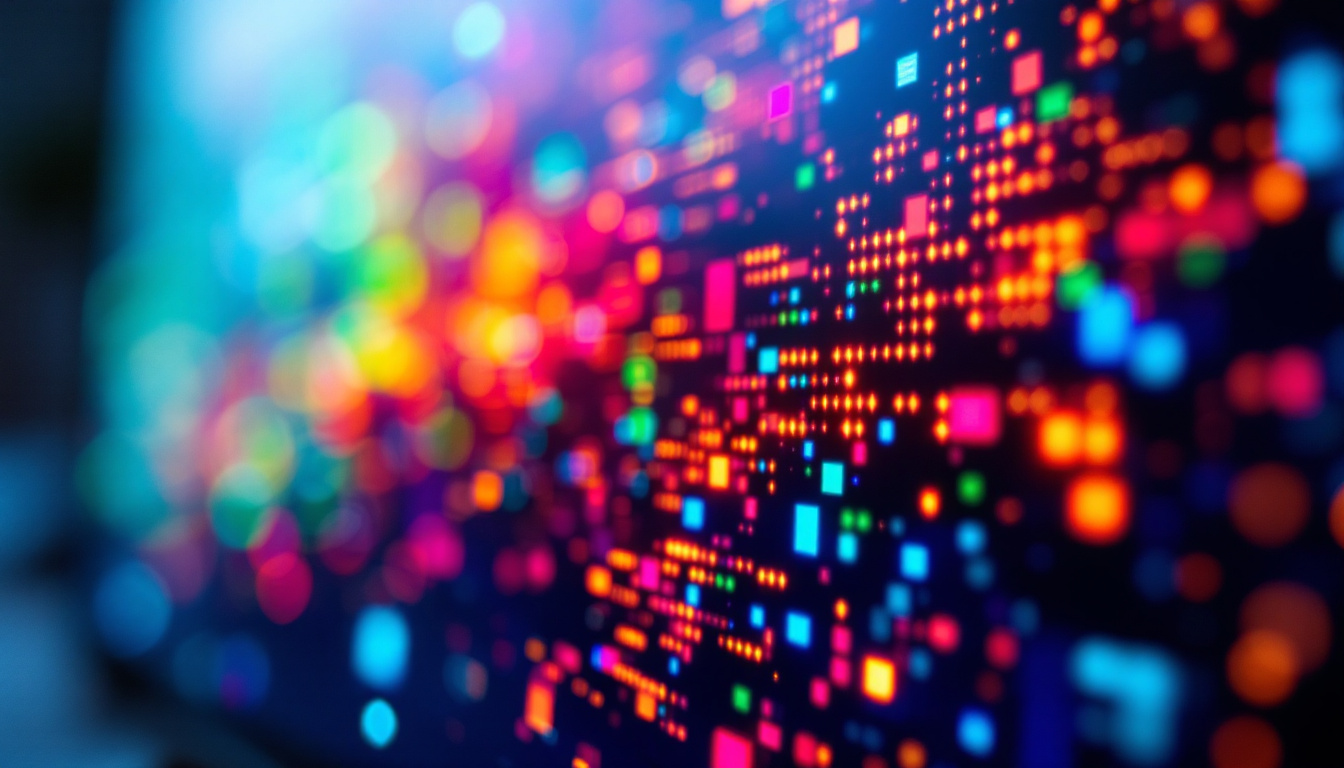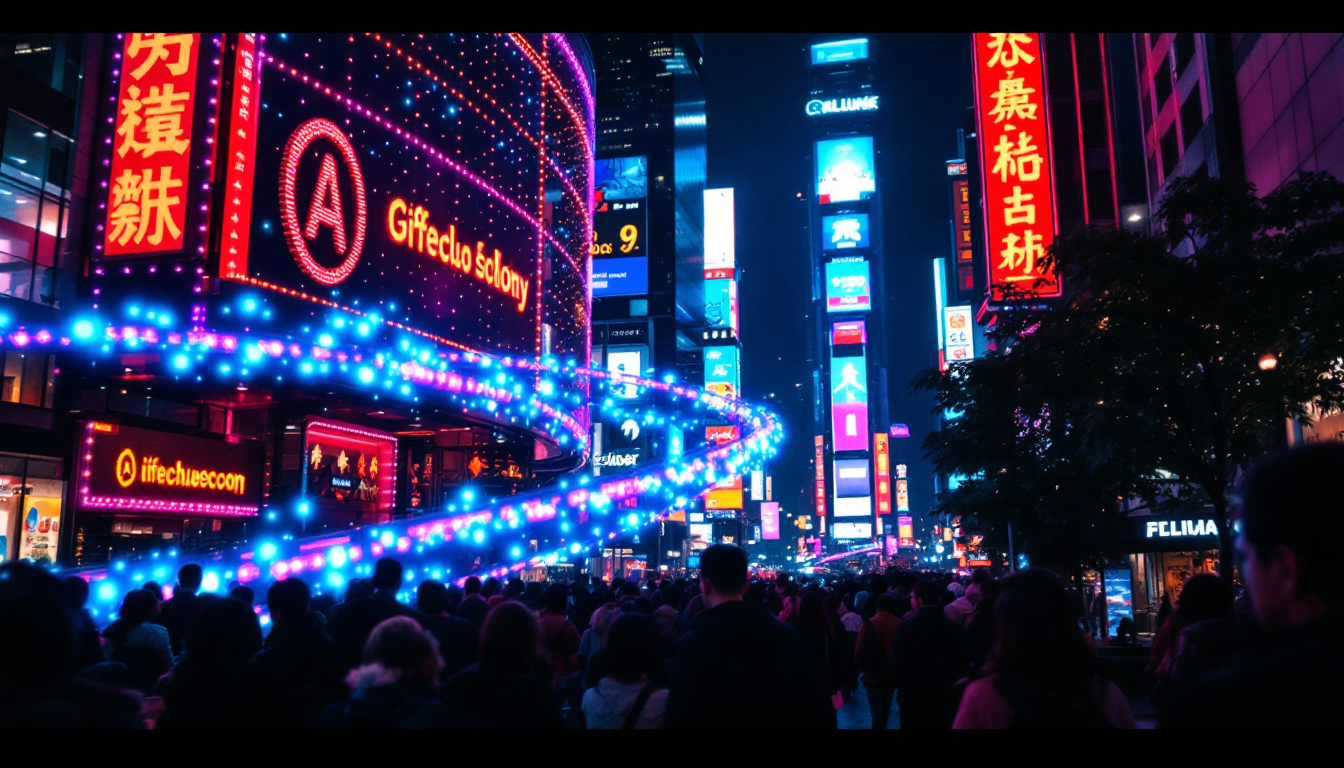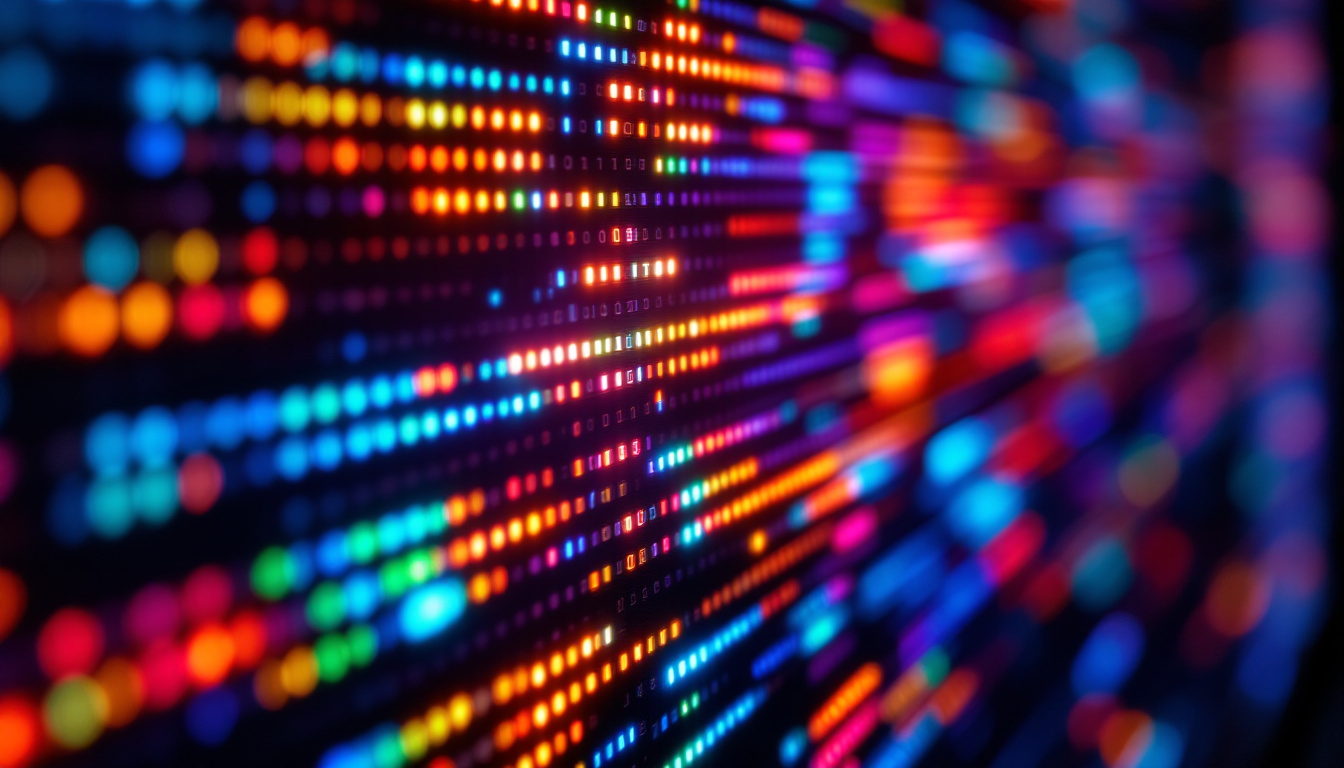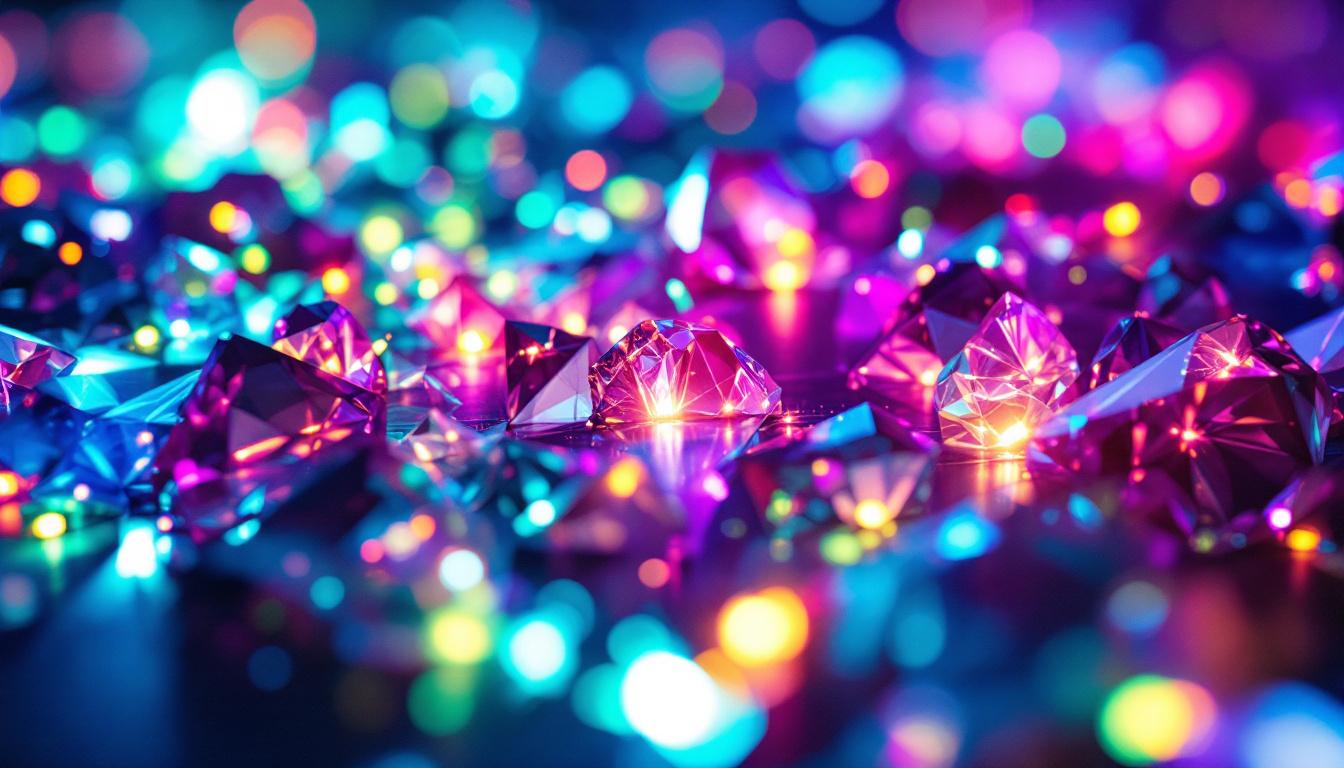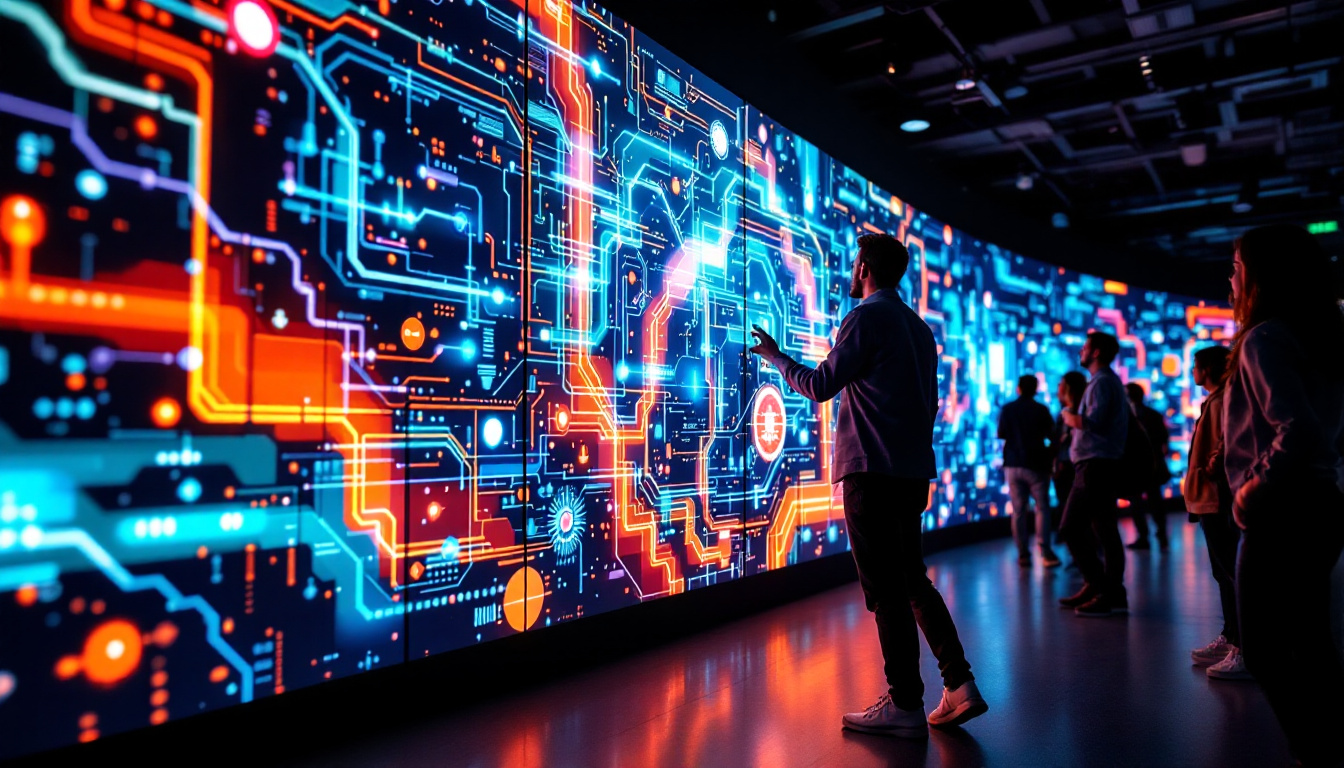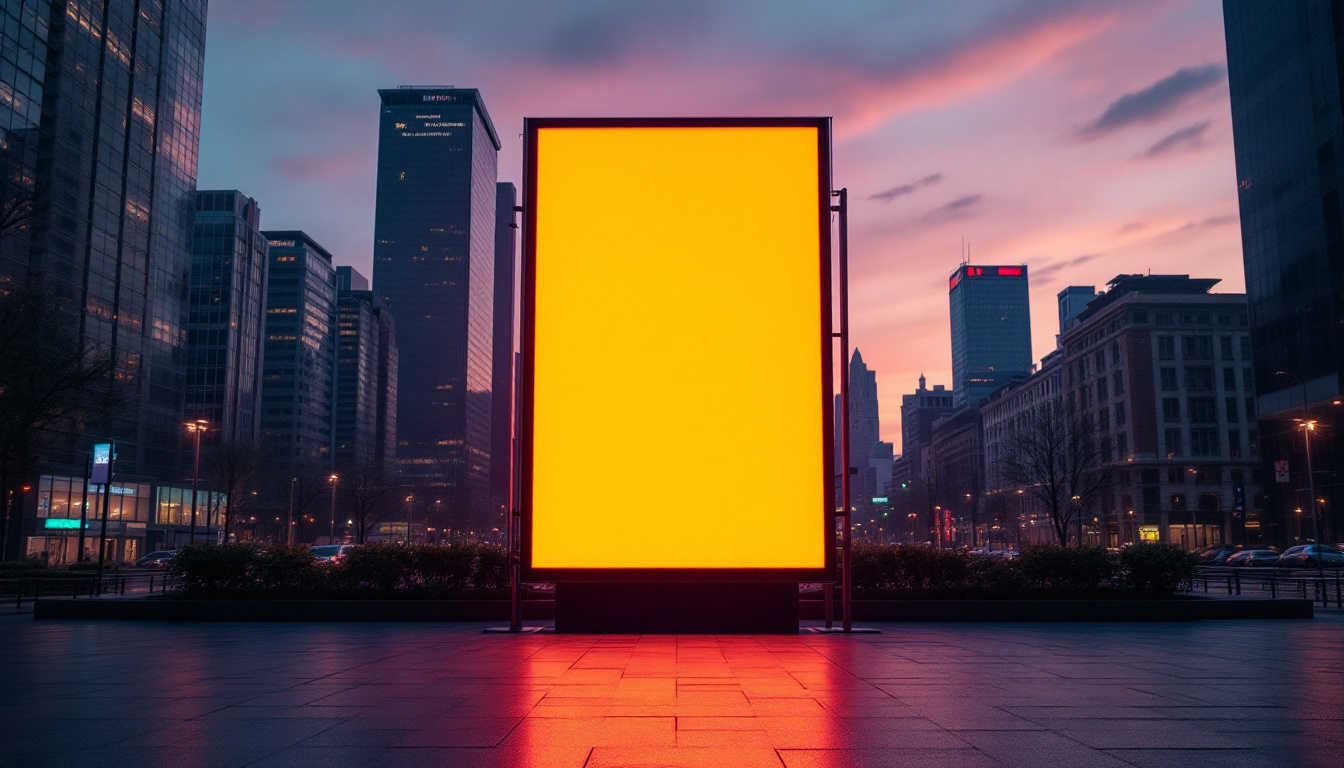In the modern world, where technology is omnipresent, the LED display has emerged as a pivotal component in various industries. From advertising to entertainment, and even in personal devices, LED displays have transformed the way we interact with visual content. This article aims to delve into the intricacies of LED displays, exploring their functionalities, applications, and the technology that powers them.
Understanding LED Technology
LED, or Light Emitting Diode, is a semiconductor device that emits light when an electric current passes through it. This technology has revolutionized the lighting and display industries due to its efficiency and versatility. The fundamental principle behind LEDs is electroluminescence, where electrons recombine with holes in the semiconductor material, releasing energy in the form of photons. This process not only allows for the creation of vibrant colors but also contributes to the longevity of LED lights, which can last up to 25 times longer than traditional incandescent bulbs.
Moreover, the compact size of LEDs enables innovative design possibilities, allowing for thinner screens and more flexible lighting solutions. As a result, they have become the preferred choice for a wide range of applications, from household lighting to intricate architectural designs. The energy efficiency of LEDs also plays a significant role in reducing overall electricity consumption, which is beneficial for both the environment and consumers’ wallets.
The Components of an LED Display
An LED display is composed of several key components that work together to produce images and videos. These include:
- LED Chips: The heart of the display, these chips emit light when energized.
- Driver Circuitry: This regulates the power supplied to the LED chips, ensuring consistent brightness and color.
- Control System: This component manages the input signals, converting them into a format that the display can understand.
Each of these components plays a crucial role in determining the display’s performance, including brightness, color accuracy, and response time. Understanding these elements is essential for anyone looking to utilize LED technology effectively. Additionally, advancements in technology have led to the development of more sophisticated driver circuitry that can handle higher refresh rates and dynamic range, enhancing the overall viewing experience. This is particularly important in applications such as gaming and professional video production, where precision and speed are paramount.
Types of LED Displays
LED displays come in various types, each suited for different applications. The most common types include:
- Direct View LED: These displays use individual LED modules to create images directly visible to the viewer. They are widely used in large outdoor billboards and digital signage.
- LED Backlit LCD: In this configuration, LEDs are used to backlight an LCD panel. This combination enhances brightness and contrast, making it popular in televisions and computer monitors.
- Organic LED (OLED): A newer technology, OLED displays use organic compounds to produce light. They offer superior color accuracy and contrast ratios, making them ideal for high-end devices.
Each type of LED display has its unique advantages and disadvantages, making it essential to choose the right one based on specific needs and applications. For instance, while Direct View LEDs are excellent for outdoor environments due to their high brightness levels, OLED displays are often favored for their ability to produce deep blacks and vibrant colors in controlled indoor settings. Furthermore, advancements in microLED technology are beginning to emerge, promising even greater efficiency and flexibility, potentially reshaping the landscape of display technology in the near future.
Applications of LED Displays
The versatility of LED displays allows them to be utilized in a wide range of applications. Their bright colors, energy efficiency, and long lifespan make them ideal for various settings.
Advertising and Marketing
One of the most prominent applications of LED displays is in advertising. digital billboards and signage have become commonplace in urban environments, capturing the attention of passersby with vibrant colors and dynamic content. The ability to change messages in real-time allows businesses to tailor their advertising strategies effectively.
Moreover, LED displays can be programmed to display multiple advertisements throughout the day, maximizing exposure and engagement. This flexibility is a significant advantage over traditional static billboards, which require physical changes to update the content.
Entertainment and Events
In the entertainment industry, LED displays play a crucial role in enhancing the audience experience. Concerts, sporting events, and theatrical performances often utilize large LED screens to display visuals, live feeds, and special effects. These displays not only provide essential information but also contribute to the overall atmosphere of the event.
Additionally, LED technology has transformed the film and television industry. High-resolution LED screens are now used in studios for virtual sets, allowing for immersive environments that enhance storytelling.
Healthcare and Education
LED displays are also making strides in healthcare and education. In hospitals, LED screens are used for patient monitoring and information dissemination, providing critical updates in real-time. Their clarity and visibility are vital in high-stakes environments where every second counts.
In educational settings, LED displays facilitate interactive learning experiences. They can be used for presentations, demonstrations, and collaborative projects, making learning more engaging for students.
Advantages of LED Displays
LED displays offer numerous advantages over traditional display technologies, making them a preferred choice in many applications.
Energy Efficiency
One of the most significant benefits of LED technology is its energy efficiency. LED displays consume considerably less power compared to older technologies like incandescent or fluorescent displays. This not only reduces operational costs but also minimizes the environmental impact.
Furthermore, the longevity of LED displays means they require less frequent replacements, contributing to lower waste and resource consumption over time.
Brightness and Visibility
LED displays are known for their exceptional brightness, making them suitable for both indoor and outdoor use. They can maintain visibility even in direct sunlight, a critical factor for outdoor advertising and public displays.
Additionally, the ability to adjust brightness levels dynamically ensures optimal viewing experiences in various lighting conditions, enhancing user satisfaction.
Color Accuracy and Range
LED displays are capable of producing a wide color gamut, resulting in vibrant and accurate color reproduction. This characteristic is particularly beneficial in applications where color fidelity is crucial, such as graphic design and photography.
Moreover, advancements in LED technology have led to improved color consistency across different displays, ensuring that content appears the same regardless of the screen being used.
Challenges and Considerations
Despite their many advantages, LED displays are not without challenges. Understanding these issues is essential for making informed decisions regarding their use.
Initial Costs
While LED displays offer long-term savings through energy efficiency and durability, the initial investment can be significant. High-quality LED screens, particularly large-format ones, can come with a hefty price tag. This upfront cost may deter some businesses from making the switch, especially small enterprises with limited budgets.
However, it is essential to consider the total cost of ownership, which includes energy savings and maintenance costs over time. For many, the long-term benefits outweigh the initial expenses.
Maintenance and Repairs
LED displays, while generally durable, are not immune to issues. Over time, components may degrade or fail, necessitating repairs. Regular maintenance is crucial to ensure optimal performance and longevity.
Additionally, finding qualified technicians for repairs can be a challenge, particularly in areas where LED technology is still emerging. Businesses must weigh the availability of support and maintenance when investing in LED displays.
Environmental Impact
While LED displays are more energy-efficient than traditional options, they still pose environmental challenges. The production and disposal of electronic components can contribute to electronic waste, which is a growing concern worldwide.
Efforts are being made to develop more sustainable practices in the manufacturing and recycling of LED technology. Choosing products from companies that prioritize sustainability can help mitigate these impacts.
The Future of LED Displays
The future of LED displays looks promising, with ongoing advancements in technology and applications. As innovation continues, several trends are emerging that could shape the industry.
MicroLED Technology
MicroLED technology is one of the most exciting developments in the LED display landscape. This technology involves using microscopic LEDs to create displays that offer superior brightness, contrast, and color accuracy. MicroLED displays are expected to be thinner, lighter, and more energy-efficient than current LED options, making them ideal for a wide range of applications.
As this technology matures, it could revolutionize everything from consumer electronics to large-scale advertising displays, providing even more options for businesses and consumers alike.
Integration with Smart Technology
Another trend is the integration of LED displays with smart technology. As the Internet of Things (IoT) continues to expand, LED displays are becoming smarter and more connected. This integration allows for real-time data sharing, remote management, and interactive capabilities.
Businesses can leverage this technology to create more engaging customer experiences, tailoring content based on audience preferences and behaviors.
Enhanced User Experience
As competition increases across industries, providing an enhanced user experience will become a priority. LED displays will play a crucial role in this endeavor, offering immersive experiences through augmented and virtual reality applications.
By combining LED technology with cutting-edge software, businesses can create captivating environments that draw customers in and keep them engaged.
Conclusion
LED displays have undoubtedly transformed the way visual content is presented and consumed. Their energy efficiency, brightness, and versatility make them an ideal choice for a myriad of applications, from advertising to education. While challenges exist, the benefits far outweigh the drawbacks, particularly as technology continues to evolve.
As the industry moves forward, embracing innovations like MicroLED technology and smart integrations will be crucial for businesses looking to stay ahead of the curve. Understanding the intricacies of LED displays will empower organizations to make informed decisions, ultimately enhancing their visual communication strategies.
In a world increasingly driven by visual content, the importance of LED displays cannot be overstated. They are not just a trend; they are a fundamental component of modern communication and interaction.
Explore Cutting-Edge LED Solutions with LumenMatrix
Ready to elevate your visual communication strategy with the latest in LED technology? LumenMatrix is at the forefront of innovation, offering a diverse range of LED display solutions tailored to your needs. From captivating Indoor and Outdoor LED Wall Displays to dynamic Vehicle and Sports LED Displays, and even specialized options like Floor and Custom LED Displays, we have everything to transform your space. Discover the power of our All-in-One and Transparent LED Displays and see how our commitment to revolutionizing visual experiences can benefit your brand. Check out LumenMatrix LED Display Solutions today and step into the future of digital signage.

